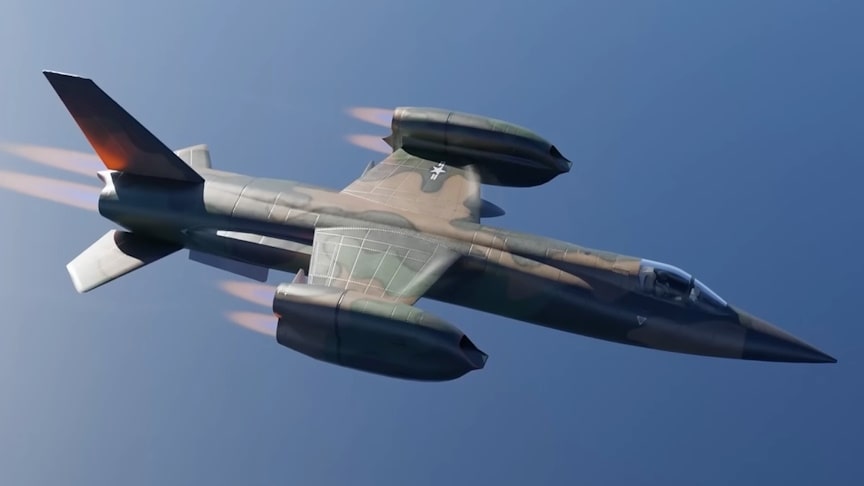The Bell D-188A was a proposed eight-engine Mach 2–capable vertical take-off and landing (VTOL) tiltjet fighter that never proceeded past the mock-up stage. The aircraft was unconventional, and consisted of a long, thin, area ruled fuselage with a large fin and all-moving stabilators in the tail. The single seat cockpit was in the extreme nose and the small-span wing was mounted high on the fuselage. At the ends of each wing were pods that contained two turbojets each.
source.image: Found And Explained
These pods were designed to swivel through an arc of 100° (horizontal to 10° past vertical) to allow for both horizontal and vertical flight. To take off vertically, the pods were rotated to direct the engine’s thrust downward, while for horizontal flight the pods were rotated back to the horizontal.
The pods were capable of directing thrust slightly forward as well for enhanced landing maneuvers. In addition to the four wing engines, four engines were also mounted in the fuselage – two in the rear directed out of two separate tail ducts, and two liftjets directly aft of the cockpit and positioned vertically to aid in VTOL operation, exhausting out of two ventral ducts.
Advertisement
The D-188A featured an engine bleed system to assist in vertical lift and maneuvering. Bleed air from the fuselage engine compressors would have been directed to a pair of thrusters in the nose and two more in the tail to aid in pitch, roll and yaw movements.











